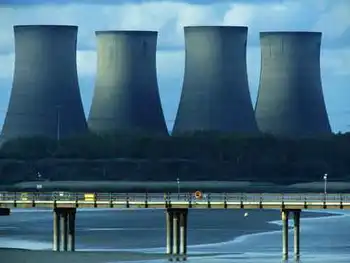Nuclear Power Plant Deal Inked in China
SHANGHAI, CHINA - Shanghai Electric Group (SEG) signed a contract with Qinshan Nuclear Power Station to supply equipment valued at 900 million yuan (US$111 million) for the latter's second-phase expansion project.
The project involves the installation of two 650-megawatt nuclear power generating units which are expected to entail 15 billion yuan (US$1.85 billion) in investment, said Li Yongjiang, chairman of Nuclear Power Qinshan Joint Venture Co Ltd.
The equipment SEG will provide includes conventional island electric generators, nuclear island steam generators, reactor core internals and control rod drive mechanism.
"This is China's first effort to design and manufacture 650- megawatt nuclear power generating units using its own technology," said SEG Chairman Wang Chengming.
Equipment will be delivered to the station in 2008 and the expansion project will be completed in 2010.
The station put two 600-megawatt nuclear power generating units into operation in 2004 as part of its second phase with an investment of 14.2 billion yuan (US$1.75 billion).
"The units are running smoothly and efficiently," said Li.
The two new 650-megawatt units aim to solve power shortages in East China, Wang said.
China started building nuclear power stations in 1985 with the launch of a project in Zhejiang's Qinshan Town. It had a 300- megawatt unit in its first phase, with an investment of 1.7 billion yuan (US$200 million).
In the third phase, two 700-megawatt units costing about US$2.9 billion were installed using Canadian technologies. The project was completed in 2003.
Qinshan Nuclear Power Station now has a capacity of 2,900- megawatt generating units, making it a major nuclear power base in China.
According to Wang Shoujun, deputy general manager of China Nuclear Industry Group Company, China is actively working towards the development of the nuclear power industry.
"More nuclear power stations will be built by 2020," Wang said.
Currently, electricity generated by coal accounts for 74 per cent of the total power; hydropower, 24 per cent; and nuclear power, 1.6 per cent.
China is expected to increase the capacity of its nuclear power generation from the current 8,700 megawatts to 40,000 megawatts in 2020, he said.
"But even then, it will only meet 4 per cent of the country's power needs," said Wang Wenda, a senior engineer in the Nuclear Power Office of SEG's Power Generation Group.
The proportion is far behind France's 78 per cent and Japan's 35 per cent, he said.
To reach the 4 per cent target, China will set up more than 30 1,000-megawatt units by 2020, he said.
"China plans to import the third generation of nuclear power technology to step up its power industry," Wang Wenda said.
Related News

BC Ferries celebrates addition of hybrid ships
VICTORIA - In a champagne celebration, BC Ferries welcomed two new, hybrid vessels into its fleet Wednesday. The ships arrived in Victoria last month, and are expected to be in service on northern routes by the summer.
The Island Aurora and Island Discovery have the ability to run on either diesel or electricity.
"The pressure on whales on the West Coast is very intense right now," said BC Ferries CEO Mark Collins. "Quiet operation is very important. These ships will be gliding out of the harbor quietly and electrically with no engines running, that will be really great for marine space."
BC Ferries…




